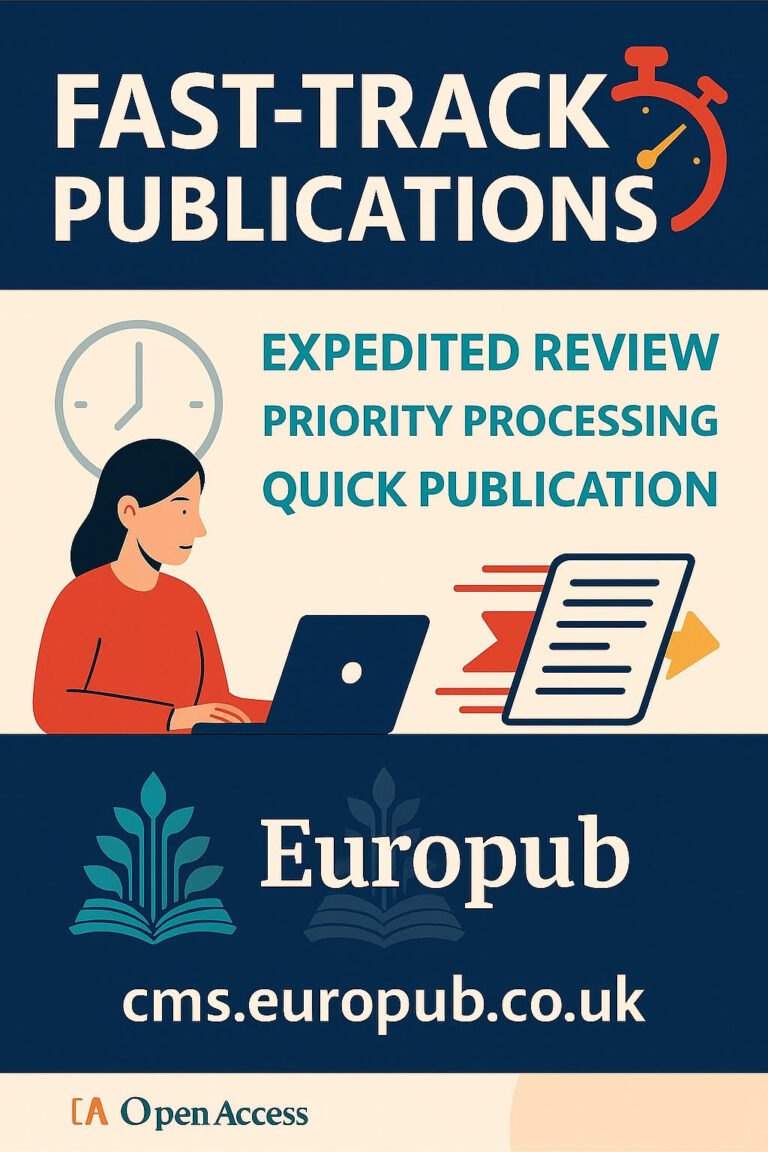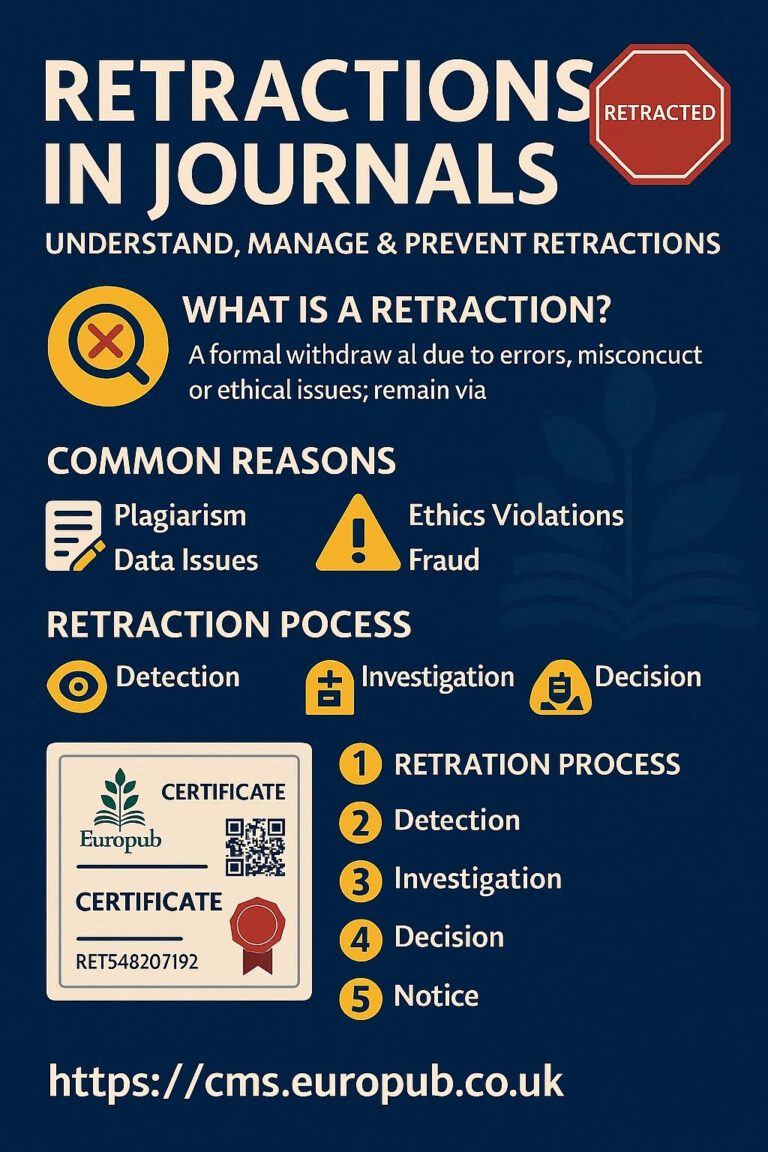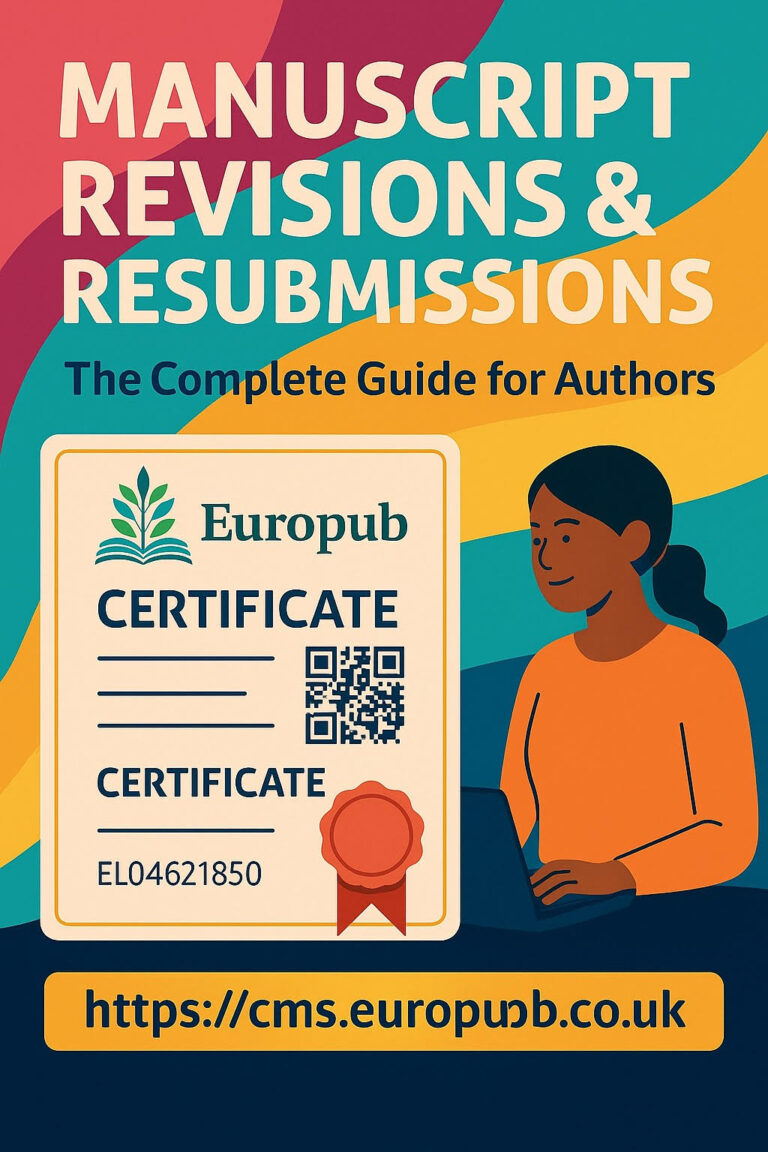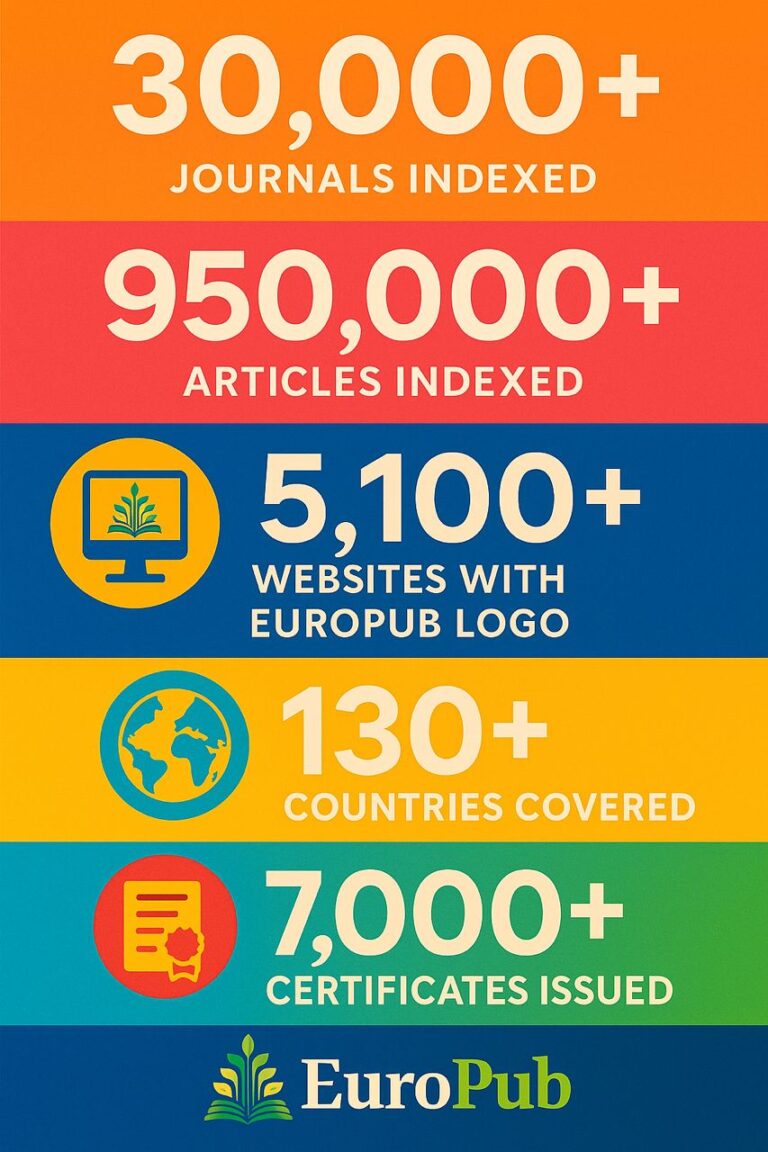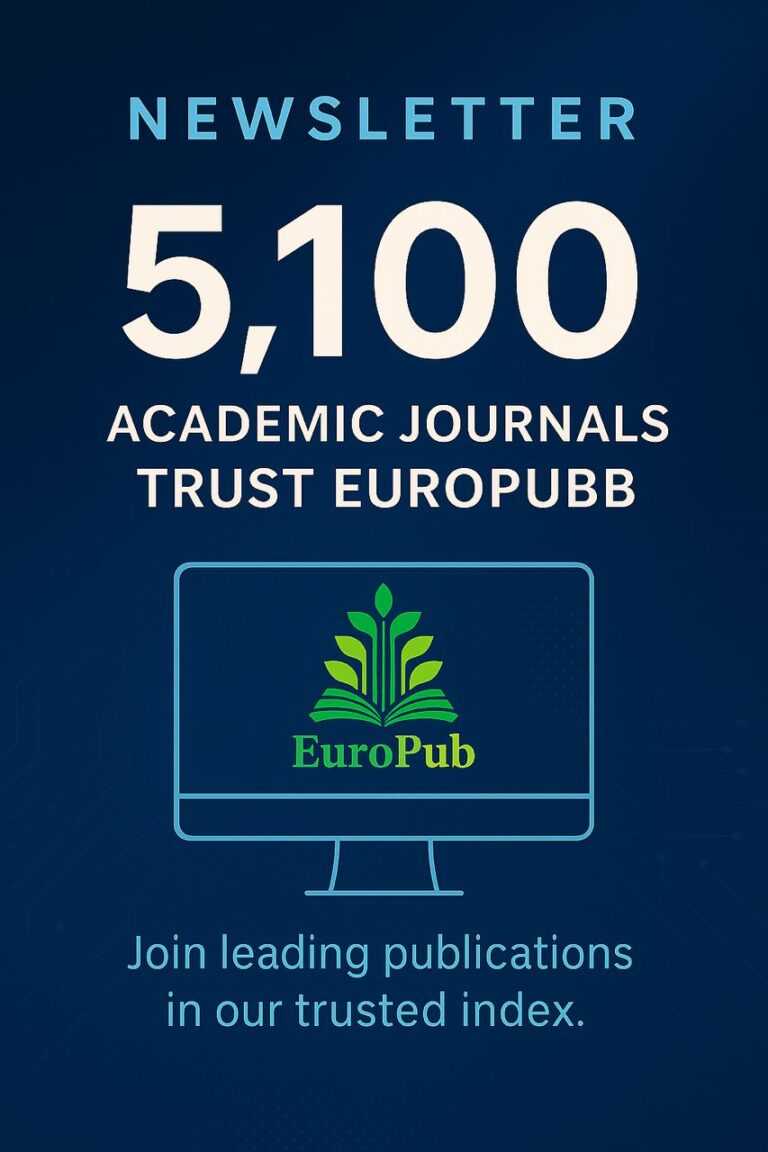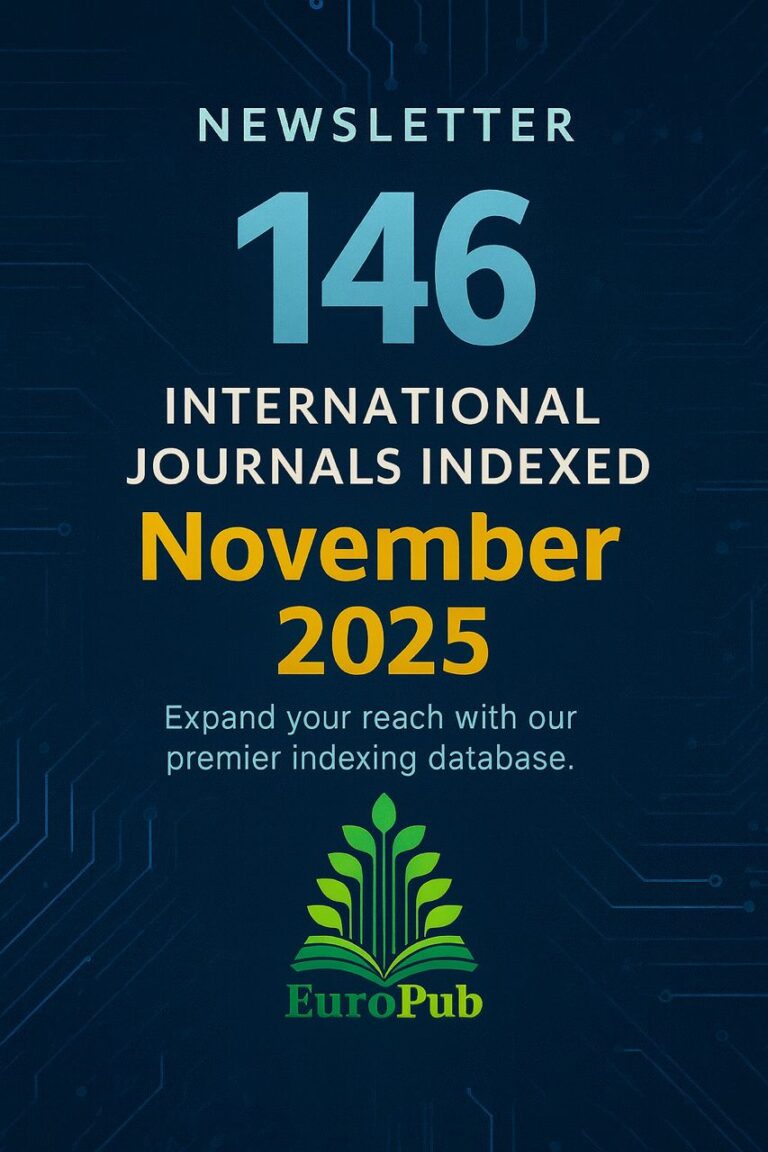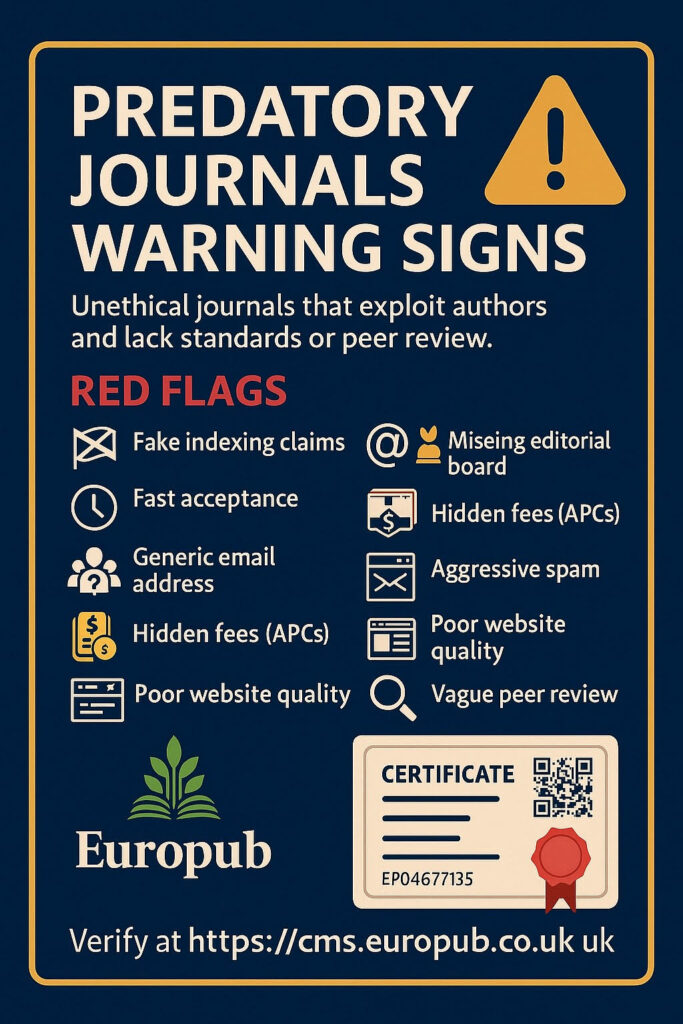
The Definitive Guide for Authors, Reviewers, and Editors
(Prepared by Europub Publication Company Ltd. UK)
 What Are Predatory Journals?
What Are Predatory Journals?
Predatory journals are unethical, profit-driven publishers that exploit the open-access model by charging publication fees without providing legitimate editorial, peer-review, or archiving services.
They pretend to be scholarly but lack transparency, editorial integrity, and true peer review. Their main goal is to collect money from unsuspecting authors while damaging the reputation of science.
Predatory journals can fake indexing, fabricate impact factors, and list false editorial boards — often stealing names from reputable researchers.
 Why Are Predatory Journals Dangerous?
Why Are Predatory Journals Dangerous?
- They damage your academic reputation.
- Published papers are not indexed or recognized by Scopus, Web of Science, or DOAJ.
- Your research may be permanently devalued.
- Once published, it’s nearly impossible to retract from them.
- They mislead funding agencies and waste public research money.
 How to Identify Predatory Journals (Main Warning Signs)
How to Identify Predatory Journals (Main Warning Signs)
 Red Flags Red Flags |  Explanation Explanation |
|---|---|
| Fake indexing claims | They falsely claim to be indexed in Scopus, ISI, DOAJ, or PubMed. |
| Fake impact factors | They use “Global Impact Factor”, “SJIF”, or “Cosmos” metrics (unofficial). |
| Fast acceptance | Promises of acceptance within 2–5 days — impossible for genuine peer review. |
| Generic email domains | Using Gmail/Yahoo instead of institutional domains. |
| Poor website quality | Broken links, grammar errors, or missing archive sections. |
| No verifiable editorial board | Fake or cloned names, no institutional affiliations. |
| Aggressive spam invitations | Constant “publish now!” emails to random scholars. |
| Suspicious journal titles | Very broad names like “International Journal of Research in All Fields”. |
| No clear peer review policy | Missing or vague explanation of editorial process. |
| Hidden APCs (fees) | No transparency about article processing charges. |
| Nonexistent address | Fake or unverifiable physical office or PO box. |
| Unethical practices | Accepting plagiarized or duplicate content. |
| Missing ISSN or DOI | Invalid or fake identifiers. |
| Unrealistic publication volume | Thousands of papers per month. |
| No retraction or ethics policy | Shows ignorance of COPE standards. |
| Copied journal design | Mimics logos and color schemes of real publishers. |
 How to Verify a Journal’s Legitimacy
How to Verify a Journal’s Legitimacy
- Check the publisher’s website:
- Look for editorial board details, scope, and ISSN (verify via ISSN Portal).
- Confirm indexing:
- Search the journal in Scopus Source List or Web of Science Master Journal List.
- Check DOAJ registration:
- Visit DOAJ to confirm if the journal is listed.
- Review peer review policy:
- Legitimate journals describe their full process transparently.
- Search for COPE membership:
- Verify at publicationethics.org/members.
- Use Europub Database:
- Browse verified, indexed journals at https://europub.co.uk.
 Beall’s List (Historical Note)
Beall’s List (Historical Note)
Dr. Jeffrey Beall (University of Colorado) first created a list of suspected predatory publishers.
Although his list was discontinued, archived versions are still available for reference.
 Archived Beall’s List (mirror)
Archived Beall’s List (mirror)
 How Europub Protects Authors and Journals
How Europub Protects Authors and Journals
- Verification & indexing: Only journals meeting scientific and ethical standards are listed.
- Certificate management system: Editors, authors, and reviewers can obtain verified digital certificates.
- Impact factor calculation: Based on transparent, real metrics.
- Editorial support: Assistance in building legitimate and ethical journals.
Visit:
 https://cms.europub.co.uk — Certificate Management Platform
https://cms.europub.co.uk — Certificate Management Platform
 https://europub.co.uk — Database of Academic Journals
https://europub.co.uk — Database of Academic Journals
 https://news.europub.co.uk — Scientific Updates and Guidance
https://news.europub.co.uk — Scientific Updates and Guidance
 Extended FAQ — Over 50 Q&A on Predatory Journals
Extended FAQ — Over 50 Q&A on Predatory Journals
Q1. What exactly defines a predatory journal?
A journal that charges fees without providing legitimate editorial or peer review services.
Q2. Are all open-access journals predatory?
No. Reputable OA journals follow COPE, DOAJ, and ICMJE standards.
Q3. How can I identify fake impact factors?
If the source is not Clarivate Journal Citation Reports or Scopus CiteScore, it’s fake.
Q4. Can a predatory journal have an ISSN?
Yes — ISSN registration is not proof of quality.
Q5. Why do predatory journals exist?
To profit from “publish or perish” academic pressure.
Q6. Can I remove my paper from a predatory journal?
Rarely. They often refuse withdrawal or charge extra.
Q7. How to check if my journal is indexed in Scopus?
Search the exact title at Scopus Sources.
Q8. What is COPE and why is it important?
The Committee on Publication Ethics sets standards for ethical publishing.
Q9. Can predatory journals appear in Google Scholar?
Yes — but indexing there doesn’t mean credibility.
Q10. What happens if I cite papers from such journals?
It can weaken your work and lower its credibility.
Q11. Are there fake conference journals too?
Yes. Many fake conferences publish papers in such outlets.
Q12. Can publishers have both good and bad journals?
Yes. Evaluate each journal separately.
Q13. How fast is too fast for peer review?
Anything under one week is suspicious.
Q14. Are there warning lists of predatory publishers?
Yes: Beall’s list archives and institutional blacklists.
Q15. How do fake journals imitate real ones?
They use similar names and domains — e.g., “sciencedirects.com”.
Q16. Is payment always a sign of a predatory journal?
No. Reputable OA journals charge transparent APCs.
Q17. Can predatory journals assign DOIs?
Yes, but that doesn’t guarantee legitimacy.
Q18. What are fake indexing databases?
Examples: Index Copernicus, SJIF, Cosmos, GIF, Universal Impact Factor.
Q19. Should I trust “Global Impact Factor” or “SJIF”?
No — these are fake metrics.
Q20. Can I report predatory journals?
Yes. To COPE, DOAJ, or your institution’s ethics committee.
Q21. Why do academics fall for them?
Due to pressure to publish quickly or lack of awareness.
Q22. Are predatory journals legal?
Mostly yes — but unethical.
Q23. How can universities help?
By educating researchers and approving verified journal lists.
Q24. How does Europub verify journals?
Through a 7-step checklist covering ethics, indexing, and publication quality.
Q25. Are hybrid journals safer?
Usually yes — if from known publishers (Elsevier, Springer, Wiley, etc.).
Q26. Can a predatory journal claim Scopus indexing?
Yes — check Scopus directly instead of trusting claims.
Q27. What about cloned journals?
They copy ISSN and names of real journals — always verify URLs.
Q28. What is the “Think.Check.Submit” initiative?
A global campaign guiding authors on journal credibility.
Q29. How can I verify editorial board members?
Search their university profiles to confirm association.
Q30. Should I trust “free publication” offers?
Usually no — legitimate journals rarely use aggressive marketing.
Q31. How can predatory journals affect my career?
They harm credibility, rankings, and funding chances.
Q32. Are predatory journals indexed in DOAJ?
No. DOAJ verifies all entries before inclusion.
Q33. Can fake journals mimic Scopus logos?
Yes — always verify URLs.
Q34. Are retractions common in predatory journals?
No. They often ignore ethical retraction requests.
Q35. Can AI tools detect fake journals?
Not reliably — manual verification is still essential.
Q36. What is “Hijacked Journal”?
A cloned website mimicking a legitimate journal domain.
Q37. What if I already published in one?
You can disclose it honestly in your CV and avoid repeating the mistake.
Q38. Do fake journals provide DOIs via CrossRef?
Some do — but they misuse the system.
Q39. How to ensure safe publishing?
Publish only through verified databases like Europub, Scopus, or DOAJ.
Q40. What are common fake publishers?
Those using names like “International Journals Consortium” or “Academic Publications Group”.
Q41. Should I pay before peer review?
Never. Genuine journals charge after acceptance.
Q42. Do fake journals list fake impact factors?
Yes — fabricated or self-assigned scores.
Q43. How to identify hijacked journals?
Mismatch between official ISSN page and journal website domain.
Q44. Are predatory publishers prosecuted?
Rarely — due to international legal gaps.
Q45. Why do some papers in predatory journals look good?
Because genuine researchers are sometimes deceived.
Q46. Can I republish my paper elsewhere?
No, unless the first journal agrees to retraction (rare).
Q47. How do funding agencies identify fake journals?
By using blacklists (e.g., UGC Care List, Beall’s criteria).
Q48. How does Europub certification help?
It authenticates journals and editors, reducing predatory risks.
Q49. How to request verification for my journal?
Submit via https://cms.europub.co.uk.
Q50. How can reviewers help?
By refusing to review for fake journals and reporting unethical practices.
 Trusted Resources
Trusted Resources
- COPE: https://publicationethics.org
- DOAJ: https://doaj.org
- Scopus: https://www.scopus.com/sources
- Web of Science: https://mjl.clarivate.com
- Think.Check.Submit: https://thinkchecksubmit.org
- Europub:
